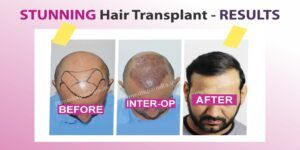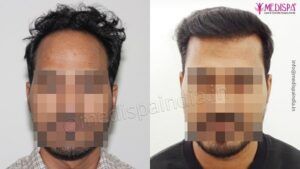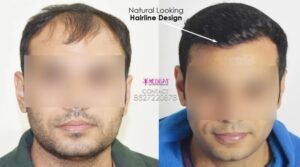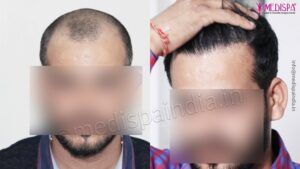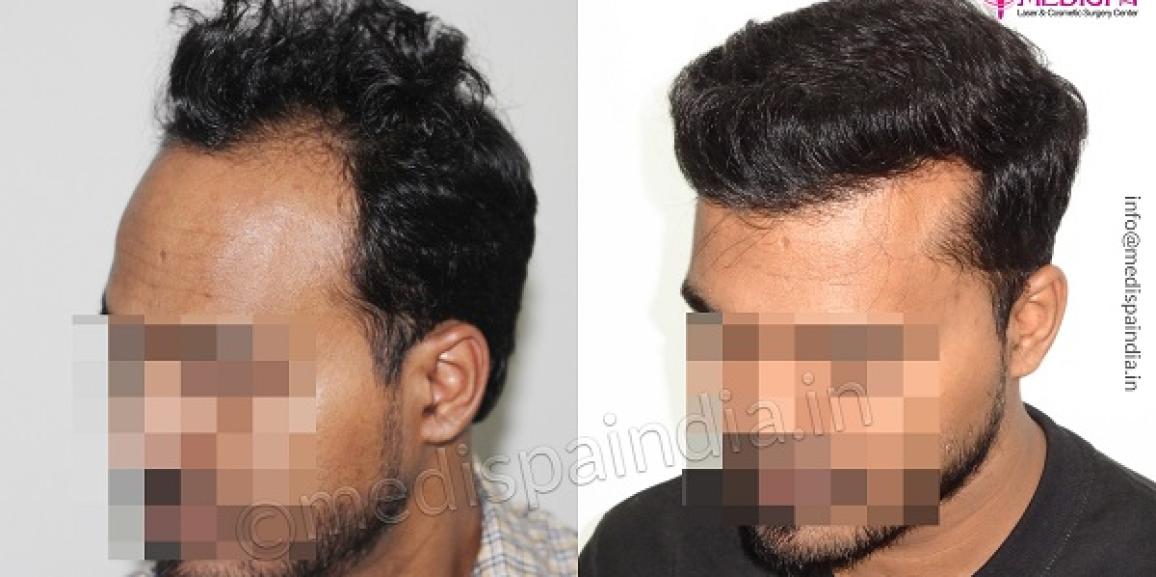
Hair Transplant Procedure
Hair transplantation is a restorative surgery that involves removing your hair from one part of your body and transplanting it to another part of your body where you don’t have any. Donor hair is retrieved from the back and sides of your head, but it can also come from other places of your body. Your surgeon will sterile the region where the operation will be conducted and numb the area for a painless process before completing the hair transplant. The hairline is created with a marker, tentatively, according to the face profile and your preference.
Hair transplant surgery is done using one of two methods: FUT or FUE.
Follicular unit transplantation (FUT):
It’s also known as FUSS (follicular unit strip surgery) or strip procedure. The steps for doing FUT are as follows:
- The donor and recipient areas will be injected with local anaesthetic.
- A scalpel will be used to remove a thin strip of roughly 1.5 cm from the donor region, which extends from the back and sides of the head from ear to ear.
- The donor region will be stitched back together using a sophisticated method known as trchophytic closure, which provides for nearly undetectable scarring.
- The surgeon’s team will cut the strip into smaller portions and then harvest each hair transplant with a knife under great magnification.
- Each retrieved hair follicle consists of one to four hair follicles.
- The surgeon would cut incisions in the bald region where the transplanting would take place with a blade.
- The hair grafts would be inserted into the created slits by the surgeon and then transplanted to the target location.
- The patient is given post-operative instructions and is discharged with regular follow-ups.
Typically, this treatment yields roughly 3000–3500 hair grafts, however the number of hair grafts you require is mostly determined by the following factors:
- Type of hair follicles you have
- Hair density in the donor location
- Size of the bald area
- Hair graft quality
Follicular unit extraction (FUE hair transplant):
To conduct FUE, the following processes must be followed:
- The donor region of the head is shaved.
- The donor and the bald region are both given local anaesthetic.
- Using a round punch surgical equipment, the surgeon would remove hair follicles one by one from the donor location.
- The donor region heals by scarring in a circular pattern that is practically imperceptible.
- With the use of a blade, slits are made at the recipient site.
- The obtained hair transplants are gently implanted to the targeted bald spot.
- Postoperative instructions are provided, and a follow-up appointment is set.
Phases of hair transplant process
As you are all aware of the fundamental technique for hair transplantation, it is critical that you comprehend the ins and outs of the operation. In the following part, we will look at the procedure for hair transplantation.
The hair transplant procedure is broken down into stages.
Phase one of the planning process: The most important step is to arrange the operation specifically for each patient. Hair transplant is planned depending on the level of hair loss, donor area hair density, and the patient’s expectations. After the planning is completed, laboratory tests are performed to validate the patient’s medical condition.
Extraction or harvesting phase: The extraction or harvesting process begins with the drawing of a preliminary hairline using a marker. The hair roots are harvested from the chosen donor region. FUT and FUE hair transplant techniques are used to harvest the hair roots. The hair transplant procedure used is determined by the location of the baldness, the extent of baldness, the required hair density, and the patient’s preferences.
Slitting phase: The recipient site is prepared according to the hairline pattern during the slitting step. For a natural-looking hair transplant, it’s crucial to think about the proper angulation and arrangement.
Transplantation phase:The removed hair roots are planted in the slits produced by the doctor during the transplantation phase. Under extreme magnification, a team of professionals inserts the hair roots. The transplanting is done with care and consideration for aesthetics.
Hair transplantation can take anywhere from 4 to 9 hours, depending on the doctor’s experience and the level of baldness. Multiple visits to the treatment are feasible in situations of significant baldness.
It is essential to seek for a doctor with advanced training and extensive expertise. Finding a good recognised facility with a skilled surgeon to execute the treatment is the most important stage in hair transplant surgery.
Medispa hair transplant clinic is the place to go if you want a hair transplant procedure that is guaranteed to work and produce amazing results.
Make an appointment at the Medispa clinic for hair transplant in Jaipur or Delhi now.
Recovery following hair transplant
The process might take anywhere from 4 to 9 hours to complete, and physical recuperation after a hair transplant could take anywhere from a week to ten days. Following the procedure, you may be discharged the same day.
After the operation, the region may be swollen for a few days, therefore the surgeon may suggest you to wear a head band and sleep with your head raised at 45 degrees for a few days. For a few days following the surgery, you may experience discomfort or soreness in that location, but the pain should be manageable; otherwise, you can take the drugs given by the surgeon.
When it comes to hair growth following the operation, you should be informed that you cannot anticipate quick results and that it will take around 5 – 6 months for the results to be noticeable. You will lose the transplanted hair within a few days following the procedure, which is completely natural. Approximately one year following the hair transplant, you should witness total hair growth.

